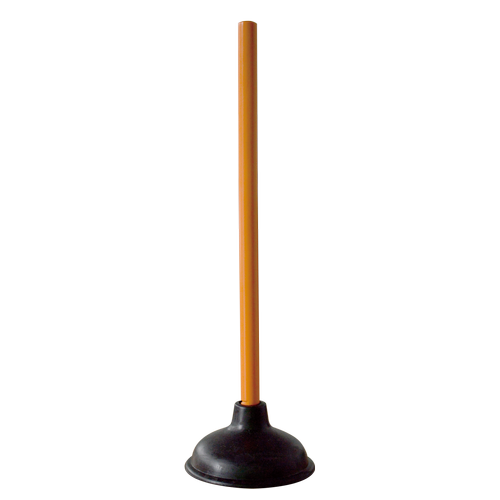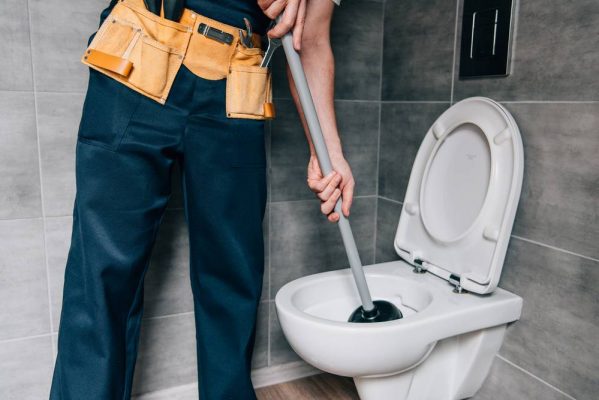Tips to Master Plungers and Drain Cleaners: Specialist Advice
Tips to Master Plungers and Drain Cleaners: Specialist Advice
Blog Article
What are your thoughts about How to Use a Plunger to Unclog a Toilet or Drain?

Intro
Appropriate upkeep of family drains is vital for stopping blockages and guaranteeing smooth water flow. Among the trick tools in every property owner's toolkit is the plunger, along with different drain cleansers created to deal with persistent blockages efficiently. This article checks out how to make use of plungers and drainpipe cleaners properly to keep your drains pipes flowing openly.
Section 1: Recognizing Plungers
Kinds of Plungers
There are numerous kinds of bettors offered, each designed for various types of drains and blocks. One of the most typical kinds consist of mug plungers, flange bettors, and accordion bettors.
Just How Plungers Job
Bettors work on the principle of developing pressure and suction to dislodge clogs. When appropriately used over a drain, they produce a vacuum that can pull out particles or separate obstructions.
Selecting the Right Plunger
Selecting the right bettor depends upon the kind of drain and the nature of the obstruction. Mug plungers are perfect for sinks and bathtubs, while flange bettors are better matched for commodes because of their design.
Common Blunders with Plungers
Avoiding these blunders makes sure efficient plunging: improper seal around the drainpipe, insufficient pressure, and not clearing bordering debris.
Area 2: Utilizing Plungers Effectively
Prep work
Before plunging, ensure the plunger covers the drainpipe completely and creates a tight seal. Clear any type of noticeable debris around the drain opening.
Strategy
Start with gentle diving motions to develop suction. Boost pressure progressively, making use of a constant rhythm. Repeat as necessary till the drain removes.
Fixing Tips
If plunging does not function, attempt changing the seal, applying petroleum jelly for a far better seal, or making use of a various sort of bettor.
Area 3: Recognizing Drainpipe Cleaning Company
Sorts Of Drainpipe Cleaning Company
Drain pipes cleaners can be chemical or enzymatic. Chemical cleaners make use of solid chemicals to liquify blockages, while enzymatic cleansers make use of all-natural enzymes to break down organic matter.
How Drainpipe Cleansers Work
Chemical cleansers react with clogs to liquify them, while enzymatic cleaners break down natural materials like hair and oil without hurting pipes.
Safety and security Considerations
Constantly use handwear covers and eye security when making use of chemical drain cleansers. Guarantee adequate ventilation and adhere to producer guidelines thoroughly.
Eco-Friendly Alternatives
Take into consideration using vinegar and cooking soft drink or enzyme-based cleaners for green options that are safer for pipes and the setting.
Area 4: Using Drain Cleaning Company Properly
Application Methods
Pour chemical cleansers directly into the drain opening. Enable them to work for the advised time before flushing with warm water. Chemical cleaners need to rest overnight.
Precautions
Stay clear of mixing various kinds of cleansers, as this can create toxic fumes. Never ever use chemical cleansers along with a bettor, as splashing can take place.
Dealing With Persistent Clogs
For consistent obstructions, consider utilizing a pipes snake or calling an expert plumbing professional to prevent damage to pipes.
Final thought
Finally, understanding how to utilize plungers and drain cleansers successfully is essential for preserving healthy and balanced plumbing systems. By selecting the right devices and strategies, property owners can deal with small clogs and avoid major pipes concerns down the line.
How To Properly Use A Plumbing Snake To Clear Drains
When any drain clogs in our home arise, we tend to gravitate toward the plunger and little else. In cases where the plunger and its vacuum-created pressure are not able to clear clogs, many immediately move to harmful chemicals or simply call their plumber to fix the issue.
we’re happy to help with all drain cleaning needs and concerns. This includes informing you on a few other home remedies you may have at your disposal for minor to moderate clogs, one of which is the use of a plumbing snake. Many people have never used one of these before – let’s go over the steps to take when your drain clogs and you have a plumbing snake available.
Attempt Plunger Use
The first step here, as we noted above, should indeed be to grab your plunger when you notice a drain clog and attempt to resolve it this way. If you’re unsure how to use a particular type of plunger, our plumbers can answer any questions you have. If this doesn’t do the trick, however, you move on to the snake.
Locate And Prepare Snake
A plumbing snake is a metal or plastic device that’s generally about a quarter of an inch thick. It’s design with significant extensions, meant to reach down into your clogged drain and push the clog out. Snakes also contain drain augers that will latch onto and push stubborn blockages.
If your plunger doesn’t clear a clog, locate your snake and bring it to the drain in question. We also recommend keeping a bucket nearby to collect the clog once you pull it out, plus we’d advise wearing goggles and possibly protective gloves.
Feed Snake
Once you’re ready to go, feed the snake slowly down the drain, using the crank device it comes with to keep it moving until it finds the clog. Once this happens, much of the clog will be latched onto the coil so you can pull it out, while the rest will simply break up and flow downward.
Detach Debris
Remove the snake slowly from the drain, and once you’ve done so, pick off any debris that’s stuck to the coil. This is another area where wearing gloves is a must.
Flush Drain
Finally, take a few minutes to ensure the snake has done its job correctly. If you’ve been using it on a toilet, flush the toilet a couple times and make sure everything flows well. If you’ve used it on a different drain, flush it with some room temperature water.
https://www.mybuddytheplumber.com/blog/how-to-properly-use-a-plumbing-snake-to-clear-drains/

Application Methods
Pour chemical cleansers directly into the drain opening. Enable them to work for the advised time before flushing with warm water. Chemical cleaners need to rest overnight.
Precautions
Stay clear of mixing various kinds of cleansers, as this can create toxic fumes. Never ever use chemical cleansers along with a bettor, as splashing can take place.
Dealing With Persistent Clogs
For consistent obstructions, consider utilizing a pipes snake or calling an expert plumbing professional to prevent damage to pipes.
Final thought
Finally, understanding how to utilize plungers and drain cleansers successfully is essential for preserving healthy and balanced plumbing systems. By selecting the right devices and strategies, property owners can deal with small clogs and avoid major pipes concerns down the line.
How To Properly Use A Plumbing Snake To Clear Drains
When any drain clogs in our home arise, we tend to gravitate toward the plunger and little else. In cases where the plunger and its vacuum-created pressure are not able to clear clogs, many immediately move to harmful chemicals or simply call their plumber to fix the issue.
we’re happy to help with all drain cleaning needs and concerns. This includes informing you on a few other home remedies you may have at your disposal for minor to moderate clogs, one of which is the use of a plumbing snake. Many people have never used one of these before – let’s go over the steps to take when your drain clogs and you have a plumbing snake available.
Attempt Plunger Use
The first step here, as we noted above, should indeed be to grab your plunger when you notice a drain clog and attempt to resolve it this way. If you’re unsure how to use a particular type of plunger, our plumbers can answer any questions you have. If this doesn’t do the trick, however, you move on to the snake.
Locate And Prepare Snake
A plumbing snake is a metal or plastic device that’s generally about a quarter of an inch thick. It’s design with significant extensions, meant to reach down into your clogged drain and push the clog out. Snakes also contain drain augers that will latch onto and push stubborn blockages.
If your plunger doesn’t clear a clog, locate your snake and bring it to the drain in question. We also recommend keeping a bucket nearby to collect the clog once you pull it out, plus we’d advise wearing goggles and possibly protective gloves.
Feed Snake
Once you’re ready to go, feed the snake slowly down the drain, using the crank device it comes with to keep it moving until it finds the clog. Once this happens, much of the clog will be latched onto the coil so you can pull it out, while the rest will simply break up and flow downward.
Detach Debris
Remove the snake slowly from the drain, and once you’ve done so, pick off any debris that’s stuck to the coil. This is another area where wearing gloves is a must.
Flush Drain
Finally, take a few minutes to ensure the snake has done its job correctly. If you’ve been using it on a toilet, flush the toilet a couple times and make sure everything flows well. If you’ve used it on a different drain, flush it with some room temperature water.
https://www.mybuddytheplumber.com/blog/how-to-properly-use-a-plumbing-snake-to-clear-drains/

We had been brought to that write-up on from a friend on a different web property. Sharing is nice. Who knows, you may very well be doing someone a favor. Thanks so much for going through it.
Click Here To Read More Report this page